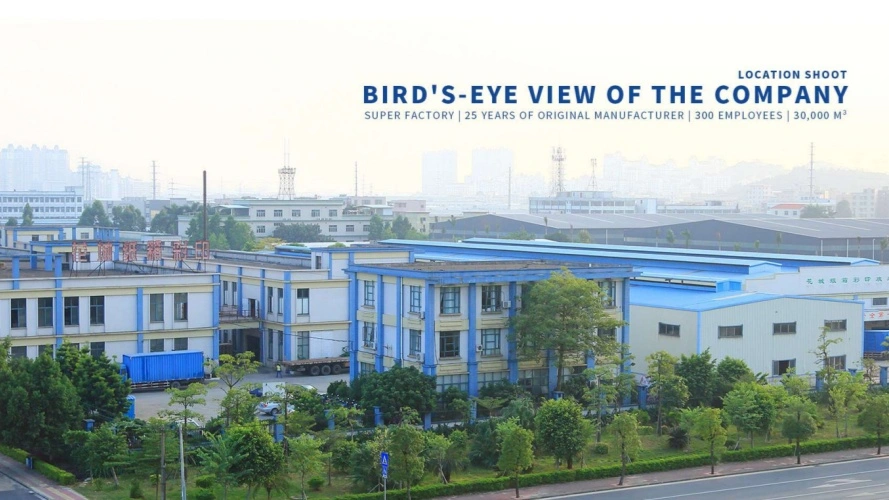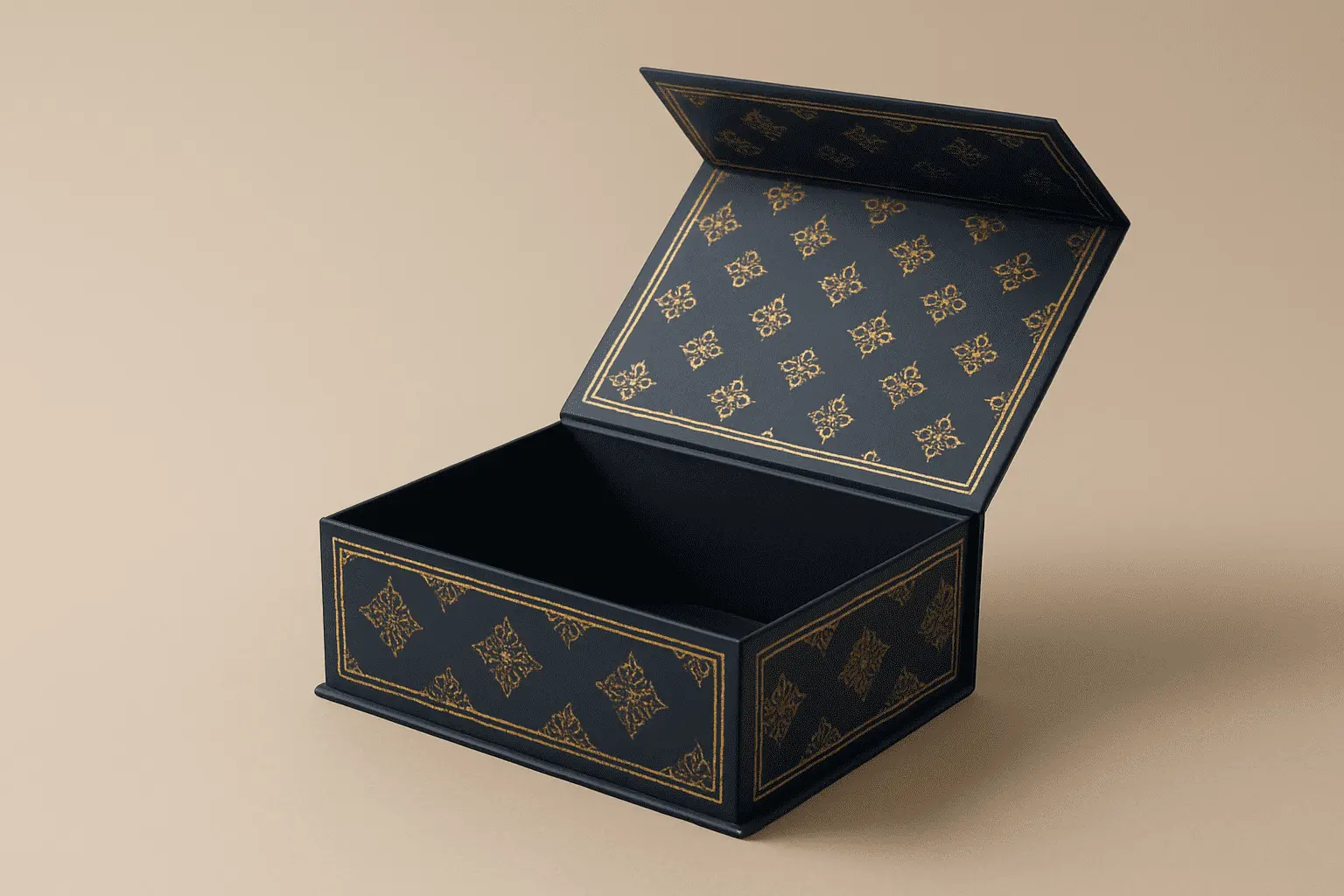Best Practices To Design Your Collapsible Rigid Box
Collapsible rigid boxes represent a revolutionary advancement in premium packaging, combining the luxurious feel of traditional rigid boxes with practical space-saving benefits. When designing your custom collapsible rigid box, implementing best practices ensures you achieve the perfect balance of aesthetics, functionality, and cost-efficiency. These innovative packaging solutions offer the elegant presentation of standard rigid boxes while addressing key logistical challenges like shipping costs and storage space. By incorporating strategic design elements, material selections, and finishing techniques, brands can create collapsible rigid boxes that not only showcase products beautifully but also align with modern sustainability goals and operational efficiencies.

Understanding the Fundamentals of Collapsible Rigid Box Design
Material Selection for Durability and Aesthetics
Selecting the right materials is paramount when designing a custom collapsible rigid box that balances luxury with practicality. The foundation of any superior collapsible rigid box begins with high-quality paperboard that provides structural integrity while maintaining flexibility at designated folding points. FSC-certified materials are increasingly becoming the standard choice, offering environmental credibility without compromising on performance. These sustainable options ensure your collapsible rigid box meets modern eco-conscious consumer expectations while delivering premium presentation. The optimal paperboard thickness typically ranges between 1.5mm to 2mm, providing sufficient rigidity while allowing for the collapsible functionality. For luxury applications, consider combining different material weights – heavier board for structural elements and lighter weights for collapsible components. This strategic material allocation ensures your collapsible rigid box maintains its premium feel while delivering the space-saving benefits that make this packaging option so attractive. Additionally, the inner lining material deserves careful consideration, as it directly contacts your product and contributes significantly to the unboxing experience. Silk-finished papers, soft-touch materials, or custom-printed interiors can dramatically elevate the perceived value of your collapsible rigid box while providing necessary protection for delicate items.
Structural Engineering Considerations
The engineering behind a successful collapsible rigid box demands precision and innovative thinking to ensure functionality without sacrificing aesthetic appeal. The collapsing mechanism represents the most critical structural element, requiring strategically placed score lines and folding points that allow smooth transformation between flat and assembled states. Professional engineering ensures these elements work seamlessly while remaining visually unobtrusive when the collapsible rigid box is in its display position. Standard collapsible rigid boxes can save more than 60% of shipping and storage costs compared to traditional gift boxes, making the engineering investment worthwhile from a logistics perspective. For products with heights between 50-100mm, patented collapsible designs can be particularly effective, saving an additional 20-30% in costs compared to standard collapsible options. The reinforcement of stress points is another crucial engineering consideration, particularly at corners and edges where repeated handling could compromise structural integrity. Innovative solutions include hidden reinforcement panels and specialized adhesive techniques that preserve the clean lines of your collapsible rigid box while enhancing durability. Furthermore, the closing mechanism deserves particular attention – magnetic closures offer a premium feel and satisfying "snap" while maintaining the box's collapsible functionality. The engineering team must ensure these elements integrate seamlessly without creating bulky profiles or interfering with the collapsing mechanism of your custom collapsible rigid box.
Sizing and Proportions Optimization
Achieving perfect proportions for your collapsible rigid box requires balancing product protection, aesthetic appeal, and efficient use of materials. The golden ratio (approximately 1:1.618) often serves as a starting point for luxury packaging proportions, creating visually pleasing dimensions that subconsciously communicate premium quality. When designing your custom collapsible rigid box, allow for approximately 3-5mm of interior space beyond your product dimensions to ensure easy insertion and removal without compromising the snug, premium feel that rigid packaging should provide. The collapsible feature introduces additional considerations – the folding mechanism requires precise dimensional planning to ensure flat-packed efficiency while maintaining appropriate assembled proportions. Working with experienced packaging engineers can help optimize these dimensions, particularly when dealing with unusual product shapes or special inserts within your collapsible rigid box. Height-to-width ratios dramatically impact both the visual impression and structural stability of your packaging. Taller, narrower collapsible rigid boxes create a sense of elegance but may require additional engineering to maintain stability, while wider, shorter proportions offer greater stability but may sacrifice some of the premium aesthetic. For products requiring multiple components or accessories, internal compartments must be thoughtfully sized and positioned to maintain structural integrity when the collapsible rigid box transitions between its flat and assembled states. This requires careful coordination between product development and packaging teams to ensure perfect alignment of all elements while preserving the space-saving benefits that make collapsible rigid boxes so appealing for modern retail operations.
Advanced Finishing Techniques for Premium Appeal
Surface Treatment Options
The surface treatment of your collapsible rigid box significantly impacts both visual appeal and tactile experience, serving as the first point of interaction between consumer and product. Modern production capabilities allow for remarkable diversity in surface treatments, each contributing unique characteristics to your collapsible rigid box design. Soft-touch lamination creates a velvety texture that elevates perceived value while providing additional durability to withstand the mechanical stresses involved in collapsing and reassembling the box. This finish pairs particularly well with dark-colored packaging, creating a sophisticated, premium impression. Spot UV treatments offer strategic contrasts by applying glossy elements against matte backgrounds, drawing attention to logos, product images, or brand elements while maintaining the overall sophistication of your collapsible rigid box. The visual contrast between matte and gloss creates dynamic surfaces that change appearance as consumers interact with the packaging. Cold and hot foil stamping techniques introduce metallic elements that catch light and draw attention, perfect for highlighting brand names or creating decorative patterns on your collapsible rigid box. The application of these techniques requires precision coordination with the collapsing mechanism to ensure the decorative elements enhance rather than interfere with functionality. These advanced surface processes can enhance the overall packaging visual effect while maintaining the practical benefits of collapsible rigid boxes. Using automatic visual positioning production lines ensures short production periods and stable quality across large orders, maintaining consistency in these sophisticated finishing techniques even when producing quantities starting at the minimum order quantity of 1000 pieces.
Innovative Closure Mechanisms
The closure system of your collapsible rigid box serves both functional and branding purposes, offering opportunities for memorable consumer interactions while securing contents. Magnetic closures represent the premium standard for collapsible rigid boxes, providing satisfying tactile feedback during opening and closing while maintaining a clean exterior design. The strength of these magnets requires careful calibration – strong enough to prevent accidental opening yet allowing smooth operation without excessive force. Hidden magnets can be strategically embedded within the structure of the collapsible rigid box, creating a seemingly seamless exterior while providing secure closure. Ribbon pulls offer another elegant closure option, adding textile elements that contrast beautifully with the paperboard construction of your collapsible rigid box. These can be color-coordinated with brand palettes or product colorways, creating cohesive visual language across packaging elements. For added security in shipping or retail environments, temporary closure seals can complement the permanent closure mechanism of your collapsible rigid box. These might include branded stickers or tear strips that provide tamper evidence without detracting from the premium unboxing experience. Innovative hybrid closures combine multiple technologies – for example, magnetic closures concealed beneath ribbon pulls – offering both practical security and aesthetic sophistication. When designing closure mechanisms for collapsible rigid boxes, consider the full lifecycle of the package, including how consumers might repurpose it after product use. Durable, satisfying closure systems increase the likelihood of package retention and reuse, extending brand exposure in the consumer's environment while supporting sustainability through extended useful life of your collapsible rigid box.
Custom Printing and Graphic Applications
Printing techniques transform your collapsible rigid box from simple container to powerful brand ambassador, with options ranging from subtle minimalism to elaborate storytelling. When designing graphics for collapsible rigid boxes, consider how images will align across folds and collapsible sections – misalignment can undermine perceived quality, while perfect alignment demonstrates attention to detail. High-resolution offset printing delivers exceptional color fidelity and fine detail reproduction, ideal for fashion, cosmetics, and premium consumer electronics packaging where visual precision matters. For collapsible rigid boxes with textured papers or specialty surfaces, ink adhesion tests are essential during development to ensure long-term durability and appearance. Digital printing technologies offer advantages for smaller production runs (though still meeting the minimum order quantity of 1000 pieces) and allow personalization options that can transform standard collapsible rigid boxes into customized marketing tools. Variable data printing can incorporate unique elements on each box while maintaining consistent brand identity. For truly distinctive effects, consider combining printing techniques with specialized board treatments – for example, printing metallic inks on soft-touch laminated surfaces creates intriguing visual and tactile contrasts that enhance consumer engagement with your collapsible rigid box. Color management becomes particularly crucial when brand identity relies on specific color reproduction. Working with G7 Color Management certified partners ensures consistent color reproduction across all packaging components of your collapsible rigid box. The graphic design must also consider the functional aspects of collapsible rigid boxes – placing key branding elements where they remain visible during display while avoiding crucial fold lines that might disrupt visual continuity. Through strategic graphic applications, your collapsible rigid box becomes not just packaging but a powerful extension of product and brand experience.
Sustainable Approaches to Collapsible Rigid Box Production
Eco-Friendly Material Innovations
The sustainability profile of collapsible rigid boxes already benefits from their space-saving design, but material selection further enhances their environmental credentials. FSC-certified paperboards form the foundation of eco-conscious collapsible rigid box production, ensuring materials come from responsibly managed forests with chain-of-custody verification throughout the supply chain. These materials support brand sustainability claims while delivering the performance characteristics necessary for premium packaging. Beyond certification, innovative material developments have introduced recycled content options that maintain the structural integrity and surface quality expected from luxury collapsible rigid boxes. Post-consumer recycled content can now achieve whiteness and smoothness comparable to virgin materials, allowing sustainable choices without aesthetic compromise. Alternative natural fibers represent another frontier in sustainable collapsible rigid box production. Materials incorporating agricultural byproducts like wheat straw or bamboo introduce visual texture while reducing dependence on traditional wood pulp sources. These materials can create distinctive, organic aesthetics that align with natural or wellness-oriented brand positioning. Water-based coatings have replaced solvent-based alternatives for surface protection on eco-friendly collapsible rigid boxes, reducing VOC emissions during manufacturing while providing necessary scuff and moisture resistance. These innovations demonstrate how collapsible rigid boxes can combine luxury presentation with genuine sustainability. The environmental benefits extend throughout the product lifecycle – beyond the initial 60% reduction in shipping and storage costs compared to standard gift boxes, these material innovations ensure end-of-life recyclability, supporting circular economy principles. When companies partner with packaging providers who maintain ISO14001-2015 Environmental Management System certification, they gain assurance that all production processes meet rigorous environmental standards, from material sourcing through manufacturing of their collapsible rigid box.
Space-Efficient Design Strategies
The fundamental advantage of collapsible rigid boxes lies in their space efficiency, which translates directly to reduced environmental impact throughout the supply chain. By integrating clever design strategies, these benefits can be maximized without compromising the premium unboxing experience. Independent R&D patented box designs particularly suited for products with heights between 50-100mm demonstrate how innovation can enhance efficiency, saving 20-30% in costs compared with standard collapsible rigid boxes. This efficiency multiplies across transportation networks – containers that might carry 5,000 traditional rigid boxes can accommodate 12,000-15,000 collapsed versions, significantly reducing the carbon footprint associated with product distribution. Strategic nesting designs take this efficiency further, allowing collapsible rigid boxes to stack more effectively during both transportation and retail storage. This maximizes space utilization while maintaining structural integrity and appearance quality upon assembly. For retail environments, collapsible rigid boxes offer advantages beyond the supply chain – their efficient storage allows retailers to maintain larger inventory in limited backroom space, reducing stockout risks while minimizing spatial requirements. When designing custom collapsible rigid box solutions, consider the entire distribution journey – from manufacturing facility through warehousing, retail environments, consumer transport, and ultimately to end-use. Each stage presents opportunities to leverage the space-saving benefits of collapsible designs. The space efficiency of collapsible rigid boxes aligns perfectly with modern e-commerce requirements, where dimensional weight pricing makes package volume a critical cost factor. By implementing these space-efficient design strategies, brands can achieve significant cost savings while substantially reducing environmental impact – demonstrating how premium packaging can align with sustainability goals through innovative collapsible rigid box design.
Life Cycle Assessment Considerations
A comprehensive approach to sustainable collapsible rigid box design examines environmental impact throughout the complete product lifecycle, from material sourcing through end-of-life scenarios. Life Cycle Assessment (LCA) methodology quantifies these impacts, providing data-driven insights that support sustainable decision-making and authentic environmental claims. The collapsible feature of these rigid boxes significantly reduces transportation-related carbon emissions – studies indicate up to 70% reduction in emissions per unit compared to standard rigid boxes when considering the complete distribution cycle. This dramatic improvement stems primarily from efficient space utilization during transportation and storage phases. Material selection plays a crucial role in lifecycle impacts – FSC-certified paperboards ensure responsible forest management at the sourcing stage, while designating recyclable materials facilitates end-of-life recovery. The adhesives used in collapsible rigid box construction warrant particular attention in lifecycle analysis, as they can impact recyclability. Water-based, biodegradable adhesives optimize end-of-life scenarios while maintaining necessary performance during the use phase. Production processes also factor into comprehensive lifecycle assessment – energy-efficient manufacturing technologies like automatic visual positioning production lines not only ensure quality consistency but reduce energy consumption per unit. When partnering with manufacturers holding ISO14001-2015 Environmental Management System certification, brands gain assurance that production processes minimize resource consumption and emissions. Consumer education represents another vital component of lifecycle management – clear communication about the recyclability of collapsible rigid boxes encourages appropriate end-of-life handling. Some brands incorporate QR codes linking to detailed recycling instructions, maximizing recovery rates. By applying these lifecycle considerations to collapsible rigid box design, brands demonstrate comprehensive environmental responsibility while benefiting from the operational efficiencies these innovative packaging solutions provide. The data generated through lifecycle assessment also supports credible sustainability claims, increasingly important in markets where consumers demand authentic environmental commitment backed by verifiable evidence.
Conclusion
Designing custom collapsible rigid boxes requires balancing aesthetic appeal, functional performance, and sustainability considerations. By implementing the best practices outlined in this guide, brands can create packaging that delivers premium presentation while offering significant logistical and environmental advantages. From material selection to structural engineering, finishing techniques to lifecycle assessment, each element contributes to creating truly exceptional packaging solutions. With 20 years of experience in the packaging industry, Fetching Printing brings unparalleled expertise to your custom collapsible rigid box projects. Our team of 300+ employees, including five senior engineers with over 10 years of industry experience, operates from our 35,000m² state-of-the-art facility equipped with advanced machinery. We've proudly served over 1,000 loyal customers across various industries, providing innovative packaging solutions that combine luxury with practicality. Ready to elevate your packaging with custom collapsible rigid boxes that save costs while enhancing your brand presentation? Contact our team today at support@fetchingprinting.com to discuss your next project!
References
1. Thompson, R. (2023). The Complete Guide to Packaging Design: Materials, Processes, and Innovation. Princeton Architectural Press.
2. Williams, H. and Wikström, F. (2022). "Sustainable Packaging Design: Environmental Impacts of Rigid and Collapsible Structures." Journal of Cleaner Production, 389, 132-145.
3. Chen, L. and Liu, J. (2023). "Advancements in Luxury Packaging: The Rise of Collapsible Rigid Boxes." Packaging Technology and Science, 36(2), 78-92.
4. Sustainable Packaging Coalition. (2024). Annual Report on Innovative Packaging Solutions. GreenBlue Institute Publishing.
5. Harper, K. (2023). Packaging Design for Luxury Brands: Balance of Form and Function. Laurence King Publishing.
6. International Organization for Standardization. (2024). "Environmental Management Systems - Requirements with Guidance for Use." ISO 14001:2015.

Based on your location and order quantity, you will have the opportunity to receive a limited time free shipping promotion!

Corporate Purpose
